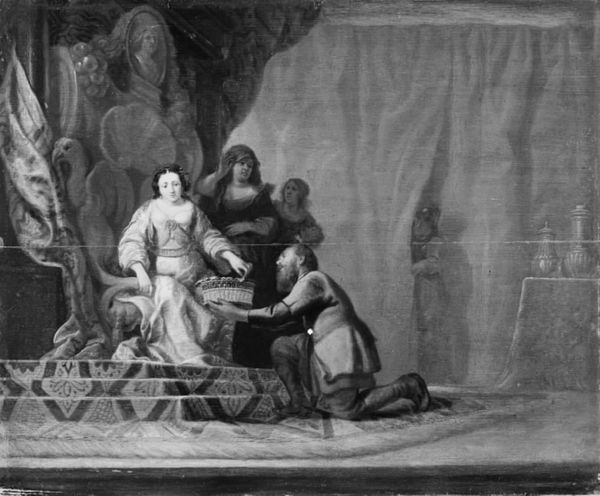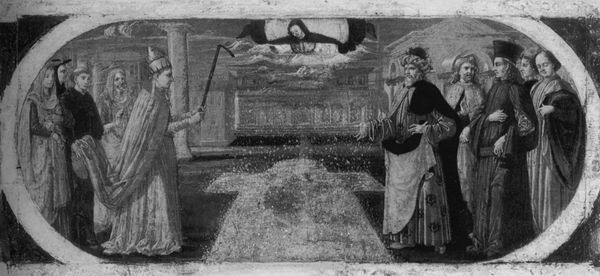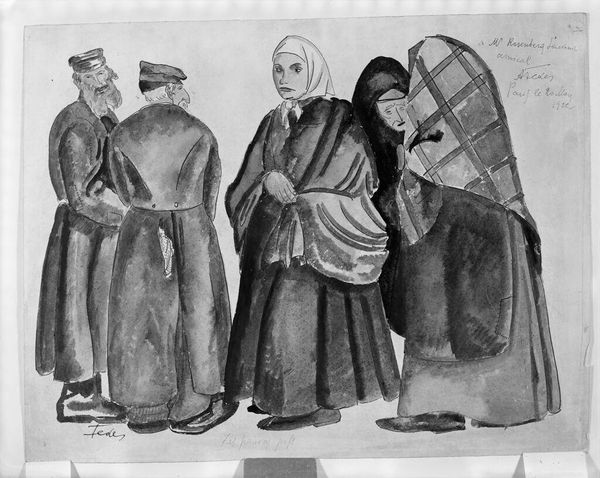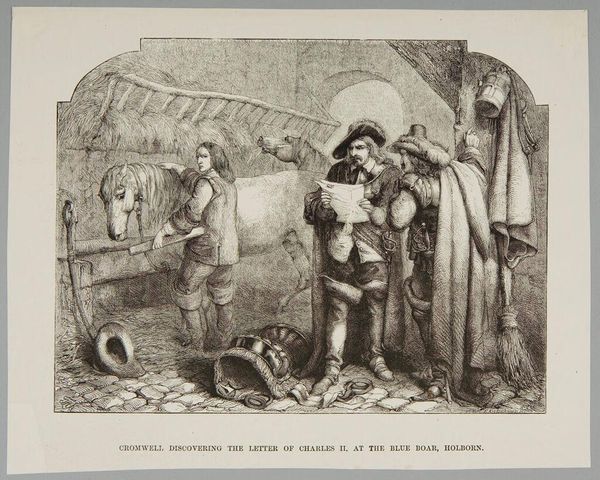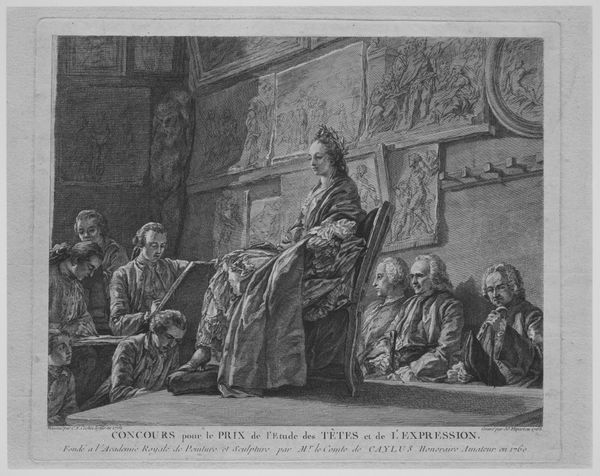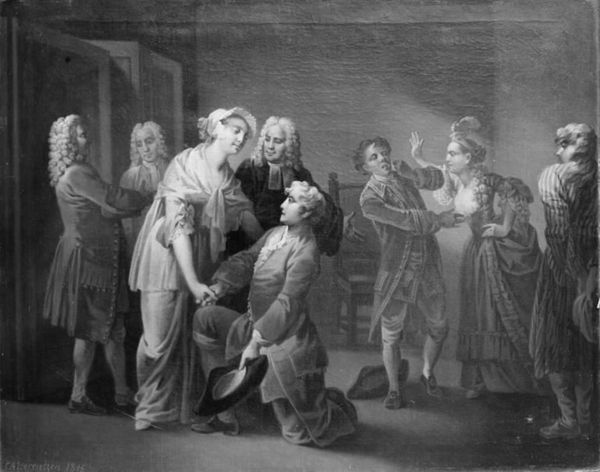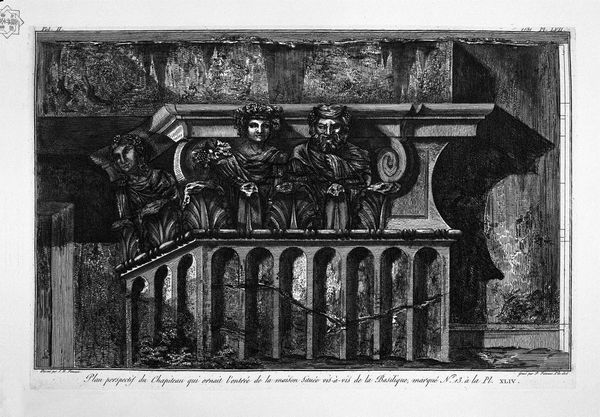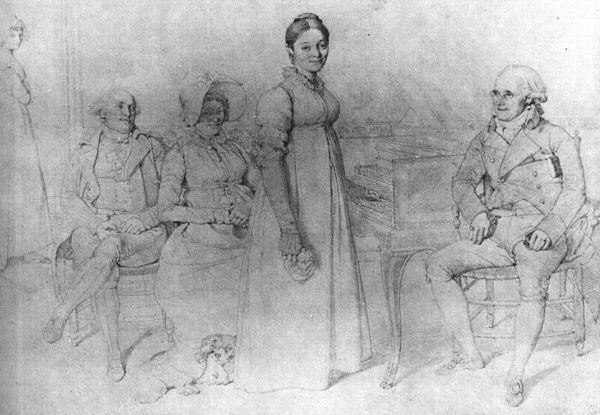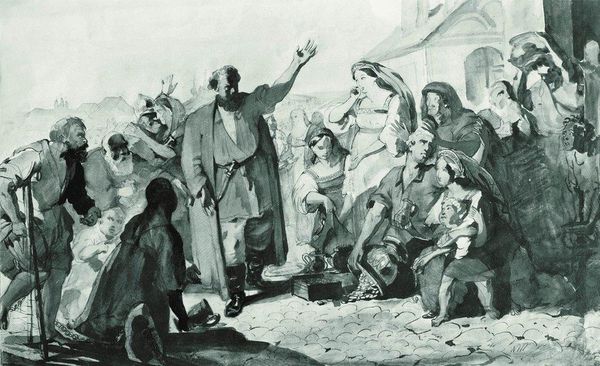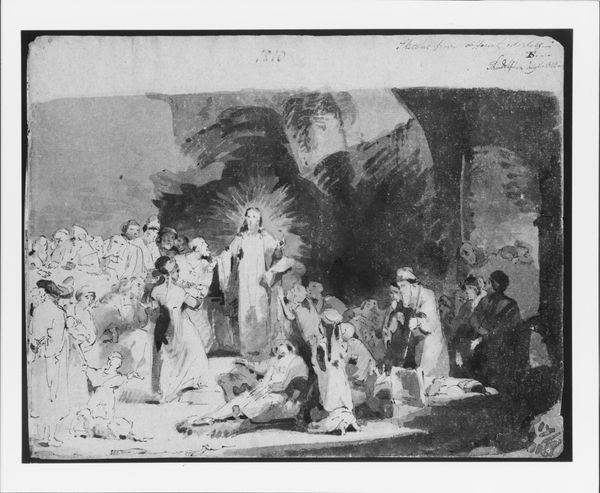
The Adjustment of Conflicting Interests: Count Raymond of Toulouse Swears at the Altar to Observe the Liberties of the City;ì Color Study for Mural, Supreme Court Room, Minnesota State Capitol,ì Saint Paul 1903
0:00
0:00
tempera, oil-paint, mural
#
tempera
#
oil-paint
#
group-portraits
#
history-painting
#
academic-art
#
charcoal
#
mural
Dimensions: 7 1/8 x 11 1/4 in. (18.1 x 28.6 cm)
Copyright: Public Domain
Curator: This is John La Farge’s "The Adjustment of Conflicting Interests: Count Raymond of Toulouse Swears at the Altar to Observe the Liberties of the City;\u00ec Color Study for Mural, Supreme Court Room, Minnesota State Capitol,\u00ec Saint Paul," created in 1903. It's currently held at the Metropolitan Museum of Art. Editor: My initial impression is somber. The limited palette contributes to a rather muted, almost ghostly, rendering of what must have been intended as a moment of high historical drama. It’s as if the event is being recalled from a great distance, or perhaps questioning its very premise. Curator: Exactly. The artwork, though a study, encapsulates a pivotal moment: Count Raymond of Toulouse swearing to uphold city liberties. La Farge situates this oath within a complex power dynamic. Note the visual weight given to the church official. It provokes questions about who dictates freedom and under whose authority those liberties are granted. Editor: And how those materials convey that power. We see tempera and oil paint, means that create a somber mood. The charcoal sketching adds to this, highlighting not just the composition but the physical creation, laboring towards power being visually realized. One cannot ignore that these were essentially means to reinforce power in the period it was made. Curator: Yes, we see this historical event depicted, and considering this was meant to adorn the Minnesota State Capitol, what narrative of power, rights and liberty was to be conveyed to its public through this visual rhetoric? What about its blind spots? Where is the commoner in this scene? It seems rather exclusionary in who gets to witness such oaths. Editor: I agree completely. The absence and implied presence in making the work; these people are completely under-represented in terms of La Farge. He’s not making “the people,” so to speak, with all those implied material means—it's to illustrate historical drama that often romanticized power and those enforcing it. Curator: Which is a contradiction given the theme is the liberties of the city. Yet the people who were intended to be guaranteed said liberties appear missing, creating a silent commentary on power dynamics of the time. I suppose for me, looking at it again, it represents a struggle for liberties always mediated and granted by other powerful figures. Editor: It really underlines the idea that even a pledge of liberty can become a spectacle, performed for and sanctioned by existing hierarchies. The materials here and their execution aren't simply neutral; they actively construct this narrative.
Comments
No comments
Be the first to comment and join the conversation on the ultimate creative platform.
